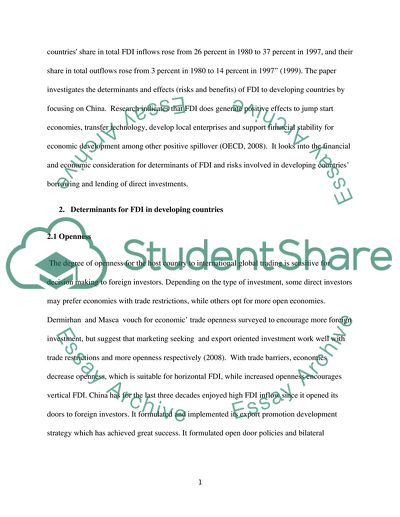Cite this document
(Foreign Direct Investment for Developing Countries Essay - 1, n.d.)
Foreign Direct Investment for Developing Countries Essay - 1. Retrieved from https://studentshare.org/finance-accounting/1865725-critically-examine-the-determinants-the-benefits-and-the-risks-of-foreign-direct-investment-for-developing-countries-using-example-of-countries-of-your-choice
Foreign Direct Investment for Developing Countries Essay - 1. Retrieved from https://studentshare.org/finance-accounting/1865725-critically-examine-the-determinants-the-benefits-and-the-risks-of-foreign-direct-investment-for-developing-countries-using-example-of-countries-of-your-choice
(Foreign Direct Investment for Developing Countries Essay - 1)
Foreign Direct Investment for Developing Countries Essay - 1. https://studentshare.org/finance-accounting/1865725-critically-examine-the-determinants-the-benefits-and-the-risks-of-foreign-direct-investment-for-developing-countries-using-example-of-countries-of-your-choice.
Foreign Direct Investment for Developing Countries Essay - 1. https://studentshare.org/finance-accounting/1865725-critically-examine-the-determinants-the-benefits-and-the-risks-of-foreign-direct-investment-for-developing-countries-using-example-of-countries-of-your-choice.
“Foreign Direct Investment for Developing Countries Essay - 1”, n.d. https://studentshare.org/finance-accounting/1865725-critically-examine-the-determinants-the-benefits-and-the-risks-of-foreign-direct-investment-for-developing-countries-using-example-of-countries-of-your-choice.


